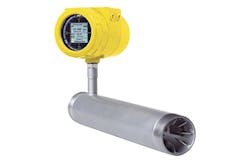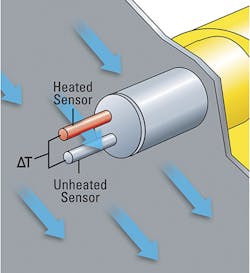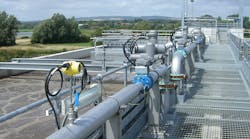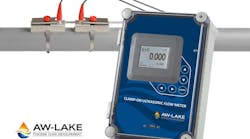An independent Midwest refiner recently approved a project to improve plant safety and reduce costs for nitrogen gas used for tank blanketing. The company operates refineries in multiple states with a combined crude-oil processing capacity of more than 500,000 barrels per day. Why would it make this decision?
Nitrogen blanketing is a practice commonly used in the chemical and petroleum refining industries to reduce hazards associated with flammable liquids. Blanketing or padding is a process of applying nitrogen gas to the vapor space of a tank or vessel. It minimizes the possibility of an explosion or fire by reducing the oxygen content or the concentration of flammable or explosive vapors in the tank or vessel.
Blanketing also decreases product evaporation and protects tanks from structural corrosion damage caused by air and moisture. Nitrogen usage varies based on the size of the tanks and vessels used in the production, transfer, transportation and packaging of the product.
There are three common types of blanketing: continuous purge, pressure control and concentration control. The continuous-purge method employs a constant nitrogen flow. Simple, but nitrogen consumption is high. The pressure-control and concentration-control methods are more costly to implement. They rely on the pressure in the tank or the concentration of oxygen to initiate nitrogen flow.
Thermal mass flowmeters can be used in all three of these types of purging methods (Fig 1).
Problem presented
The refiner’s plant team needed to accurately measure the nitrogen flow rate of nitrogen in its tank blanketing applications. Blanketing is important because of the possibility of static-electricity build-up, and nitrogen displaces one leg of the fire triangle. Implementing the pressure-control system satisfied the plant team’s major concern, which is always safety first.
Nitrogen blanketing, where combustible, flammable or explosive materials are stored, processed or generated prevents these materials from coming into contact with oxygen in the air. The blanket of nitrogen gas creates a nonflammable environment, preventing fire or explosion.
The plant team also wanted more accurate flow measurement to improve efficiency by lowering nitrogen consumption and costs, and to eliminate any unexpected supply shortages.
Nitrogen amounts pumped into or released out of the tank’s vapor space are controlled by a predetermined pressure set-point. As product is pumped from the tank, the vapor inside expands and pressure falls below set-point. More nitrogen is then introduced. As the vessel is filled, the vapors begin to compress. Nitrogen vapors released are usually sent to a vapor recovery system.
Product falling and rising can create static electricity. Therefore, the amount of nitrogen in this vapor space is an extremely important safety factor. The refiner needed a flowmeter that could provide a mass flow output, measure a low flow rate of 36 scfh to 600 scfh at 158 F with a pressure maintained at 60 psig in a 1-inch schedule 80 pipe with limited straight-run. With these process requirements, the plant team had many challenges to overcome.
Solution strategic
After consulting with the applications team at Fluid Components International (FCI), the refinery’s process engineers selected the Model ST100L thermal dispersion air/gas in-line mass flowmeter and the Vortab flow conditioner with an accuracy of ±0.75 % of reading, ±0.5 % of full scale (Fig 2). The flowmeter is an in-line, spool piece designed gas flowmeter that combines sound transmitter/electronics and calibration to provide a gas flowmeter suited for industrial process and plant applications.
The flow conditioner includes a low-pressure-loss solution for flow-profile irregularities produced by elbows, valves, and other disturbances that are commonly present when sufficient straight-run is not available to generate the necessary flow profile. Its swirl-removal technology and mixing process achieve thorough and efficient flow conditioning.
Tabs are located within the conditioner. They promote rapid mixing that creates a uniform flow profile for proper meter flow measurement by eliminating swirl and distortion or any other profile irregularities that could be present through the transitional flow range.
The meter was factory calibrated at a NIST certified laboratory for nitrogen service, but could be calibrated in virtually any other process gas. Flowmeters calibrated using the actual gas to be measured provide accuracy better than that of a pre-calculated air equivalent methodology that often fails to transfer accurately in real world installations.
Once installed, the flowmeter delivered accurate, repeatable and reliable output necessary for the tank blanketing valve to deliver the safety and cost savings expected in this application.
Variations on theme
Some tank blanketing applications have larger lines. An insertion style air/gas meter has the same accuracy specifications as the one described above, but it allows the end user the capability to insert the probe directly into the line (Fig 3).
With this type flowmeter, up to five calibration groups can be stored to support a broad flow range, including differing same-gas mixtures and multiple gases, with a range of flow far in excess of 100:1. An on-board data logger included has a removable 2-GB micro-SD memory card to store process flow data.
Users select from 4-20 mA analog, frequency/pulse, or certified digital bus communications such as HART, FOUNDATION™ Fieldbus, PROFIBUS PA or Modbus RS-485. Should a plant’s communication need change in the future, replacement cards can be installed by field technicians.
A graphical, multivariable, backlit LCD display/readout provides local information with a continuous display of all process measurements and alarm status, as well as service diagnostics.
The flowmeter operates at up to 850 F and is available with both integral and remote (up to 1000 feet) electronics versions. The entire instrument is agency approved for hazardous environments. The enclosure is NEMA 4X/IP67 rated.
Conclusion
Flowmeters installed at the Midwest refinery for its nitrogen tank blanketing application provide accurate mass flow measurement with limited straight run, for safety in processing, storing and generating of flammable and combustible products.
The refiner also has reduced nitrogen consumption, in turn reducing overall operating costs of consumption. According to the plant engineering team, the flowmeters are working better than expected.
Jim DeLee, Sr. is and applications team member with Fluid Components International.
Fluid Components International solves flow and level measurement applications for industrial process and plant applications using patented thermal dispersion flow measurement technologies. With more than 40 years experience and the world’s largest installed base of thermal dispersion instruments, FCI knows your application and has proven solutions that save time and expense.





